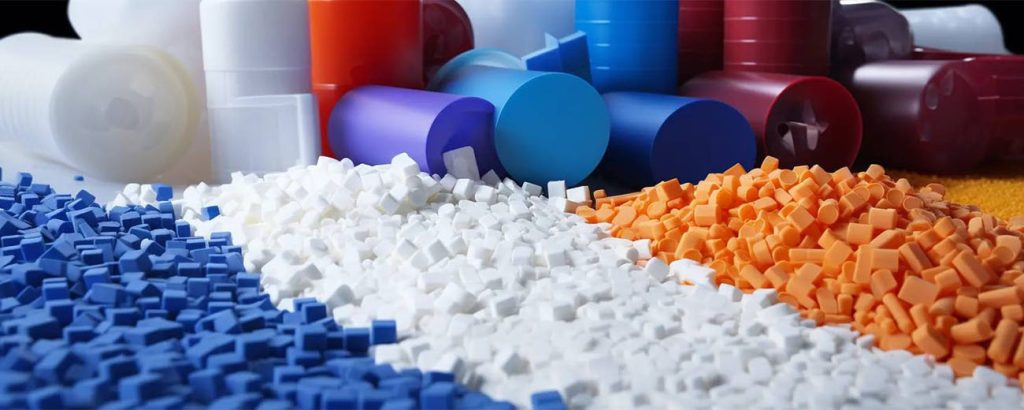- +49 (160) 95 36 60 33
- 08:00 - 17:00
- info@sapphirepetroleum.com
- Select Language
Known for its excellent balance of strength, flexibility, and chemical resistance, Polyethylene is a material trusted in various industries for applications that require durability and reliability.

3. Linear Low-Density Polyethylene (LLDPE)
• Applications:
• Stretch wraps.
• Industrial films.
• Packaging films.
• Rotational molded tanks.
• Grades:
• Rotomolding Grade: Used for storage tanks and bins.
• Film Grade: For durable stretch films.
• Injection Molding Grade: For caps and closures.
4. Ultra-High Molecular Weight Polyethylene (UHMWPE)
• Applications:
• Conveyor belts.
• Bulletproof vests.
• Medical implants.
• Industrial wear parts.
• Grades:
• Wear-Resistant Grade: For machinery parts.
• Medical Grade: For prosthetics and implants.
• High-Performance Grade: For advanced industrial applications.
5. Cross-Linked Polyethylene (PEX)
• Applications:
• Plumbing and water pipes.
• Radiant floor heating systems.
• Insulated cables.
• Grades:
• PEX-A (Peroxide Method): Offers the highest flexibility.
• PEX-B (Silane Method): Economical and durable.
• PEX-C (Electron Beam Method): Moderate flexibility and chemical resistance.
6. Medium-Density Polyethylene (MDPE)
• Applications:
• Gas pipes.
• Shrink films.
• Packaging.
• Grades:
• Extrusion Grade: For pipes and sheets.
• Blow Molding Grade: For medium-strength containers.
1. High-Density Polyethylene (HDPE)
• Applications:
• Pipes and fittings.
• Fuel tanks.
• Household containers.
• Agricultural films.
• Grades:
• Blow Molding Grade: Used for bottles and containers.
• Injection Molding Grade: Used for caps and crates.
• Film Grade: For thin films and packaging.
• Extrusion Grade: For pipes and profiles.
2. Low-Density Polyethylene (LDPE)
• Applications:
• Plastic bags.
• Food packaging films.
• Squeeze bottles.
• Agricultural sheets.
• Grades:
• General Purpose Grade: For flexible packaging.
• High Clarity Film Grade: For premium packaging.
• Coating Grade: Used for paper and board coatings.
…
Polyethylene, one of the most widely used thermoplastics, is produced through the polymerization of ethylene gas, which is derived from crude oil or natural gas. Depending on the polymerization process, various types of polyethylene are created, each suited to specific applications.
Polyethylene is used extensively in everyday products, including plastic bags, packaging films, pipes, containers, and household goods. It is also a vital material in industries such as construction, healthcare, and agriculture.
Chemical Structure:
Polyethylene consists of long chains of ethylene monomers (CH₂=CH₂). Its molecular structure can vary, resulting in different types of polyethylene:
Key Characteristics:
Economic Impact:
Polyethylene is a cornerstone of the plastics industry, supporting global economies by enabling cost-effective production and wide-ranging industrial applications.
Industrial Applications:
Polyethylene is integral to:
Environmental Impact:
Polyethylene’s non-biodegradable nature contributes to plastic pollution in the environment. Its production also consumes significant energy, resulting in carbon emissions.
Sustainability Efforts:
Innovations in Polyethylene Production:
Technological advancements are improving the efficiency of polyethylene production and reducing its environmental footprint, including catalyst innovations and energy-efficient polymerization methods.
Role in Emerging Applications:
Polyethylene is being adapted for smart packaging, renewable energy applications (e.g., solar panel encapsulation), and advanced industrial uses, ensuring its relevance in the evolving global market.
Polyethylene is a thermoplastic polymer made from the polymerization of ethylene gas. It is the most widely used plastic globally, valued for its versatility and durability. Its analysis focuses on properties such as density, melt flow rate, and mechanical strength. Key parameters include:
Low-Density Polyethylene (LDPE): ~0.91–0.93 g/cm³.
High-Density Polyethylene (HDPE): ~0.94–0.97 g/cm³.
LDPE: ~10–15 MPa.
HDPE: ~20–40 MPa.
Standards such as ASTM D638, ISO 178, and ISO 1133 are used for polyethylene property analysis.
Major polyethylene producers are countries with significant petrochemical industries. Key producers include:
Polyethylene is classified based on density and polymer structure:
Polyethylene is used across various industries due to its versatility:

SAPPHIRE PETROLEUM COMPANY
© 2024 All Rights Reserved | Powered by Netologist
Reviews
There are no reviews yet.